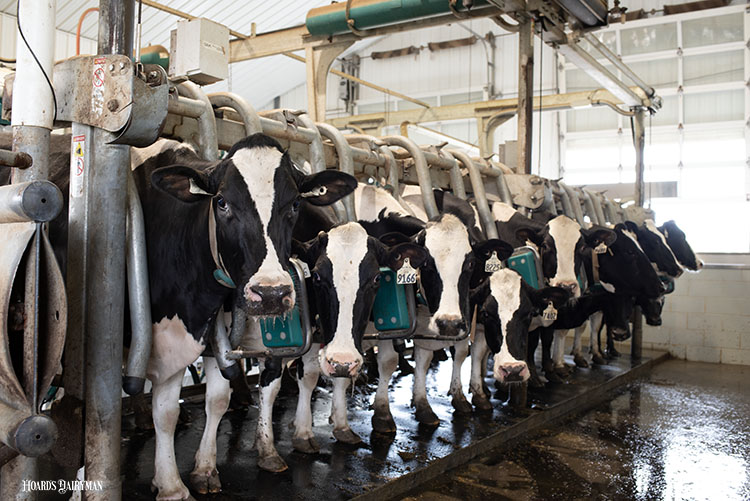
Anyone who has milked cows in a parlor has likely noticed that certain members of a herd have preferences for when they come in to be milked. There always seem to be cows that tend to wait around and make sure they are among the last groups through the parlor. On the other hand, some are more proactive and aim to get milking over with by coming in early. There are also the cows that get milked early or later just based on the flow of the milking.
No matter the reason, the cows that are milked early in a group then head back to the pen where they are able to eat, lay down, and ruminate while the rest of the group is milked. Could this mean these cows produce more milk than their herdmates that remain in a holding pen?
A group of Australian researchers investigated this question in a grazing model and found that it appears to be true. On the 1,200-cow grazing farm where they conducted the study, cows that were milked first produced 5 more kilograms (11 more pounds) of milk than the cows that were milked last. In this scenario, those cows at the end of the milking order were away from the pasture for 8 to 9 hours a day.
“By the time the last cows get back to the paddock, nearly 40% of the pasture dry matter is gone,” said Martin Auldist, one of the researchers on the project, in an article from Dairy Global. In the trial, 40% was the high end of dry matter removal, with pastures averaging anywhere from 18% to 40%.
The same logic could also be applied to a freestall barn feeding a total mixed ration (TMR). An additional consideration for grazing herds is that cows will choose the most desirable places to graze first, leaving the cows that return to the pasture last with the less desirable forages. In this study, those animals were consuming forage with less metabolizable energy and crude protein plus more neutral detergent fiber.
Data from sensors that monitored jaw movement showed that cows that returned to the group later spent more time eating in an attempt to catch up to their peers. Interestingly, though, there wasn’t a significant difference in lying time between the cows milked early and those milked late.
Clearly, some cows must get milked last in a group. To minimize the potential of lost milk in these animals, the researchers offered a few recommendations. In a grazing system, a farm might consider limiting the herd to about 60% of the pasture as cows return from milking and then opening up the remaining 40% once all cows are back. Delivering fresh feed when the herd is all together, whether its new grass or a supplement, can also encourage the cows milked early to get back up and eat more.
When cows are in a barn, creating smaller milking groups to limit the amount of time cows spend waiting to be milked can be helpful. Ensure enough feed is delivered for all cows and that the ration is formulated well so that each bite is the same no matter if a cow is the first one back to the pen or the last.








